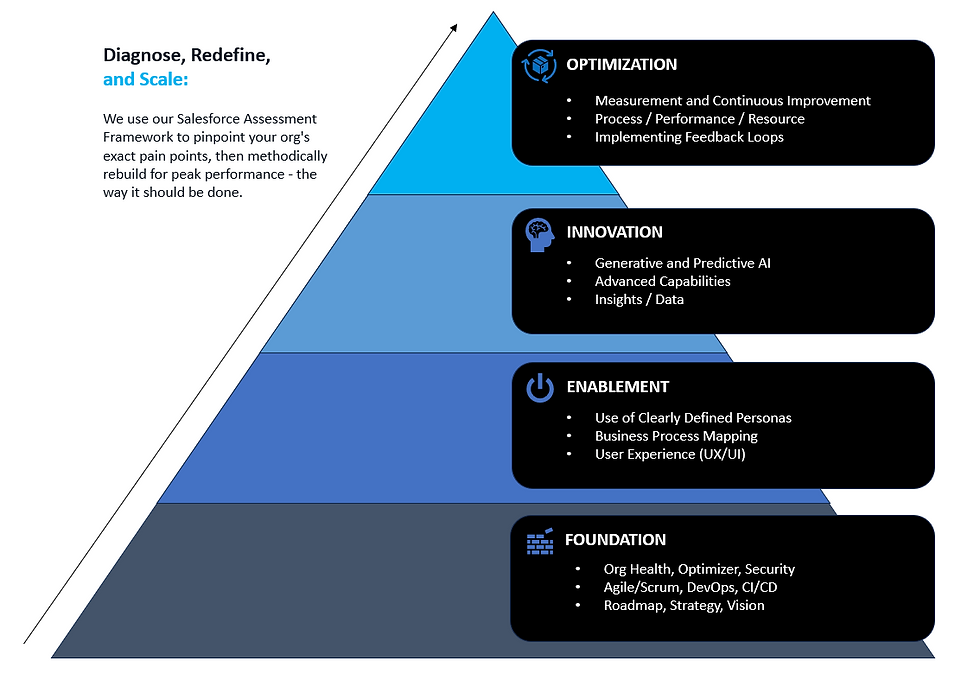Don't Let Bad Data Sink Your SMB: The Financial and Operational Cost of Dirty Salesforce
- Jon Ewoniuk
- Feb 12, 2024
- 3 min read
Gone are the days of handwritten customer records and napkin- scribbled addresses. In today's data-driven world, accurate information is the lifeblood of any business, especially for SMBs navigating the dynamic world of Salesforce.
But just how critical is clean data for your Salesforce success? Consider these sobering statistics:
A 2022 Experian study revealed that inaccurate data costs US businesses an average of $15 million annually. That's a significant burden for any SMB already wrestling with tight margins.
Forrester Research estimates that data quality issues lead to a 12% decrease in sales productivity. In a competitive market, losing productivity due to bad data can be the difference between thriving and sinking.
A Gartner report states that poor data quality leads to a 10% drop in customer satisfaction. In today's experience-driven economy, this translates to lost loyalty, negative reviews, and potentially, churn.
The impact of dirty data goes beyond just dollars and cents. It cascades through your entire business, affecting:
Financials:
Wasted resources: Imagine sales reps chasing bad leads, marketing teams sending campaigns to incorrect addresses, and finance struggling to reconcile inaccurate invoices. Dirty data wastes precious time, effort, and budget.
Missed opportunities: Inaccurate data obscures valuable insights into customer behavior, market trends, and sales performance. Without clear visibility, you may miss crucial opportunities to optimize campaigns, attract new customers, and increase revenue.
Compliance risks: Inaccurate data can lead to non-compliance with regulations, resulting in hefty fines and reputational damage.
Customer Satisfaction:
Frustrated customers: Imagine sending birthday wishes to the wrong customer or offering irrelevant deals. Inaccurate data leads to disjointed and frustrating customer experiences, damaging trust and loyalty.
Decreased customer lifetime value: When you don't understand your customers due to bad data, it's hard to personalize interactions and build lasting relationships. This translates to decreased customer lifetime value and lost revenue.
Negative word-of-mouth: Frustrated customers share their experiences, and in today's digital world, bad reviews can spread quickly. Inaccurate data can quickly snowball into a PR nightmare.
Customer Service:
Increased resolution times: Imagine your service team struggling to find customer information or resolve issues due to inaccurate data. This leads to longer wait times, customer frustration, and decreased efficiency.
Lower first-call resolution rates: Without accurate customer information and history readily available, it's difficult for service reps to resolve issues on the first contact, leading to repeat calls and wasted resources.
Damaged brand reputation: When customer service experiences are plagued by inaccurate data, it reflects poorly on your brand and erodes trust.
Sales Reps:
Wasted time and effort: Imagine reps chasing bad leads or pursuing opportunities with outdated information. This not only demotivates the team but also leads to lost productivity and missed sales quotas.
Ineffective sales strategies: Without accurate data on customer demographics, buying behavior, and preferences, it's impossible to develop targeted and effective sales strategies. This leads to subpar results and missed revenue opportunities.
Decreased morale: Imagine the frustration of a rep who consistently faces challenges due to bad data. This can lead to decreased morale, burnout, and high turnover rates.
Don't let data overwhelm you. The journey to cleaner data starts with small, actionable steps.
Here's how you can get started right now:
1. Quick Wins with Salesforce Health Check:
Leverage the built-in Salesforce Health Check tool to identify major data quality issues in areas like duplicate records, missing fields, and data inconsistencies.
Prioritize quick fixes: Start by cleaning up easily identifiable errors like missing phone numbers or invalid email addresses.
2. Automate the Mundane:
Utilize Salesforce Data Loader to upload large datasets seamlessly and minimize manual entry errors.
Explore data validation rules and automation tools to automatically flag and prevent inaccurate data entry going forward.
3. Empower Your Team:
Conduct training sessions to educate your team on the importance of data hygiene and best practices for data entry.
Encourage employees to flag any data quality concerns they encounter through dedicated channels.
4. Seek the Right Help:
Consider partnering with a Salesforce data cleansing expert for deeper analysis and tackling complex data challenges.
Look for solutions tailored to your industry and specific Salesforce needs.
Remember, consistent effort is key. By taking small, consistent steps, you can transform your Salesforce into a reliable source of truth and fuel your business growth.
By: Jon Ewoniuk
Book a Free Call here.
Jon is the Founder | Consultant at Peak360 IT. Peak360 IT helps companies solve technical, resource, and implementation challenges on the Salesforce platform. Founded in 2014, Peak360 IT is a Salesforce SI Partner that specializes in Sales Cloud, Service Cloud, Experience Cloud - and implementing custom applications and automations on the Salesforce Platform.
With our backgrounds in Software Development, Technology, and Consulting - Peak360 IT has a reputation for developing custom integrations using various technologies, such as MuleSoft, Google Apigee, and other SOA/API frameworks.



Comments